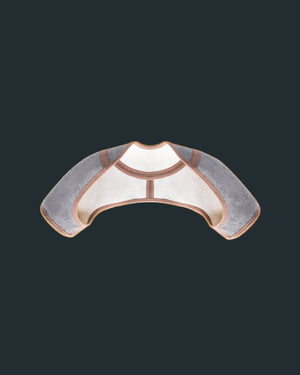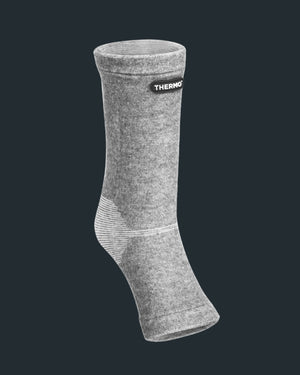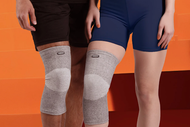Want to prevent muscle soreness? Explore effective post-workout recovery tips that can boost your fitness gains, prevent injury, and enhance overall wellness.
Mastering post-workout recovery tips can be a powerful tool in your fitness arsenal. These essential steps, carried out after your training session, pave the way for optimal muscle growth, injury prevention, and improved performance.
In this article, we offer you a comprehensive guide on post-workout recovery, ensuring that you reap the highest benefits from every workout. We’ll also give you tips to help maximize your fitness gains, avoid injury, and feel better after exercise.
Effective Post-Workout Recovery Tips
1. Rehydrate by Drinking Plenty of Water
After a workout, your body can be significantly depleted of fluids. Rehydrate by drinking sufficient water to replace lost fluids. Aim for at least a couple of cups within an hour after your workout.
2. Eat a Balanced Meal Rich in Protein and Carbohydrates
Post-workout nutrition is crucial in muscle recovery. Consume a meal high in protein to facilitate muscle growth and repair. Eat carbohydrates to replenish energy stores. Try to eat within 45 minutes to an hour after working out.
Try out these sample food selections:
Protein-Rich Foods:
- Grilled chicken
- Tuna or salmon
- Eggs
- Greek yogurt
- Cottage cheese
- Quinoa
- Lentils
- Protein shake
Carbohydrate-Rich Foods:
- Brown rice
- Sweet potatoes
- Oats
- Quinoa
- Whole grain bread
- Bananas
- Berries
- Apples
3. Prioritize Quality Sleep
Aim for 7-9 hours of sleep per night. Quality sleep is critical for muscle recovery as it promotes the release of growth hormones that aid in tissue repair and recovery.
During sleep, your body goes into overdrive to repair and rebuild muscle groups. This is because while you are in the deep stages of sleep, your body releases growth hormones that are crucial for muscle recovery and rebuilding.
One study found that athletes who were sleep-deprived showed signs of reduced endurance capacity on tough workouts like bench press. In contrast, extending sleep has been shown to enhance athletic performance, with basketball players who increased their sleep duration experiencing improved overall athletic performance.
4. Engage in Active Recovery Exercises
Active recovery refers to low-intensity exercises you perform on rest days. It helps increase blood flow to the muscles, helping to speed up the recovery process by delivering more nutrients and oxygen and removing waste products from the muscles.
Examples of active recovery exercises include:
- Walking: A simple, quick-paced walk can do wonders for recovery. It helps increase blood circulation without putting stress on your joints and muscles. Aim for a 20-30-minute walk on your off days.
- Cycling: A leisurely bike ride is another excellent option. Make sure to keep the intensity low—you should be able to carry on a conversation comfortably while cycling.
- Yoga: Gentle yoga styles like Hatha or Yin yoga can help stretch out your muscles, enhance flexibility, and promote relaxation. Holding poses for a longer period can also help in releasing muscle tension.
- Swimming: Swimming is a low-impact, full-body exercise that can help to loosen up tight muscles and increase blood circulation. Just keep your swimming session light, and avoid intense strokes.
5. Stretch Your Muscles Post-Workout
Stretching after a workout can help increase flexibility, reduce muscle tension, and promote circulation, all of which contribute to faster recovery. Here is a quick step-by-step guide to post-workout stretching.
Step 1: Cool Down Gradually
Start with a short cool down, such as walking or slow jogging, to gradually reduce your heart rate.
Step 2: Opt for Static Stretches
After a workout, focus on static stretching where you hold a stretch for 20-30 seconds. This helps to lengthen your muscles and increase flexibility.
Step 3: Don’t Rush
Move slowly into each stretch and hold it without bouncing. Bouncing can lead to small tears in the muscle and increase your risk of injury.
Step 4: Stretch All Major Muscle Groups
Be sure to include stretches for all major muscle groups that you utilized during your workout. Examples are the hamstrings, quadriceps, calves, chest, back, shoulders, and arms.
6. Use Cold and Heat Therapy for Muscle Relief
Apply an ice pack to reduce inflammation and alleviate muscle pain post-workout. Use heat therapy, like a warm bath, to relax muscles and improve circulation.
7. Use Foam Rolling Techniques
Foam rolling, also known as self-myofascial release, can be quite beneficial for post-workout recovery. It can help to alleviate muscle tightness, promote blood flow, and reduce inflammation.
Just a few minutes of foam rolling after your workout may enhance your recovery, relieve sore muscles, and improve your performance for your next workout session.
For those unfamiliar with this self-massage technique, here’s a simple guide to get you started:
Step 1: Choose the Right Foam Roller
Foam rollers come in different sizes and densities. For beginners, it's recommended to start with a longer and softer foam roller, as it provides more surface area and less intense pressure.
Step 2: Position the Foam Roller Correctly
Place the foam roller on the floor and position the part of your body that you'd like to target on top of the roller. For example, if you're targeting your thighs, sit on the ground and place the foam roller under your thighs.
Step 3: Roll Slowly
Use your body weight to apply pressure and slowly roll back and forth over the targeted area. Roll slowly, about an inch per second. When you find areas that are tense or tight, try to hold or roll on those areas a little longer.
8. Manage Stress Levels
High levels of stress can impede your recovery process. However, relaxation techniques like deep breathing exercises, meditation, or practices like yoga and mindfulness can help manage stress levels, contribute to better quality sleep, and subsequently, promote faster recovery.
Here are some effective means of coping with stress:
- Integrate mindfulness meditation into your routine. Even a few minutes a day can help reduce stress.
- Practice deep breathing exercises to help calm your mind and body.
- Engage in regular physical activity or exercise, which can act as a natural stress reliever.
- Maintain a healthy diet, as certain foods can have a calming effect and support overall mental well-being.
- Prioritize quality sleep, as inadequate sleep can exacerbate stress.
- Take regular breaks from work or other stress-inducing activities.
- Engage in relaxing activities like reading a book, listening to music, drawing, or taking a bath.
9. Consider Taking Recovery Supplements
Supplements like whey protein, BCAAs, and creatine can assist in muscle recovery. However, it's important to consult with a healthcare professional before starting any new supplement regimen.
10. Maintain Consistency in Your Recovery Routine
Recovery should be part of your regular exercise routine. Consistency in implementing these tips can lead to enhanced performance and fitness outcomes. Try out this sample schedule for optimum muscle recovery:
Immediately Post-Workout to 30 Minutes
- Cool down for the first 5-10 minutes. This could include a slow jog or walk.
- Start rehydrating immediately, aiming to replace lost fluids during the workout.
- Begin your post-workout stretching routine, focusing on all major muscle groups used in your workout. This should take around 10-15 minutes.
30 to 60 Minutes Post-Workout
- Consume a post-workout meal or snack rich in protein and carbohydrates. This could be a chicken and vegetable wrap, peanut butter and banana on whole grain toast, or a protein shake with a piece of fruit.
1 to 2 Hours Post-Workout
- Continue hydrating.
- If you're experiencing muscle soreness, consider using cold and heat therapy on affected areas.
- If it's close to bedtime, start winding down for a restful night's sleep. This could include turning off electronic devices, reading a book, or a relaxation technique like meditation.
1 Day Post-Workout (Rest Day)
- Engage in active recovery exercises like a brisk walk, swimming, or a gentle yoga class.
- Continue eating balanced meals to provide your body with the necessary nutrients for recovery.
- Prioritize a good night's sleep to support the recovery process.
11. Balance Your Workouts With a Mix of High and Low-Intensity Activities
Avoid overworking your muscles by balancing high-intensity workouts like weight lifting with low-intensity activities such as yoga or pilates. This variety also keeps your workout routine exciting.
Busy at work and don’t have time to cook up a routine? Read about our Rucking Guide — the best workout for busy professionals.
12. Regularly Check Your Health Status and Listen to Your Body
Regular health check-ups can help assess how your body is responding to your fitness regimen. Also, tune into your body's signals. Persistent fatigue or excessive muscle soreness might be a sign that you need additional recovery time.
The Role of Supplements in Recovery
Benefits of Supplements
Sometimes, diet alone may not provide all the nutrients your body needs for full recovery. This is where supplements come in. They can fill any nutritional gaps and help speed up recovery.
Supplements can be a valuable component of your post-workout recovery routine, providing a convenient and efficient avenue to receive essential nutrients. For instance, protein supplements, such as whey, support muscle repair and growth, while amino acid supplements like BCAAs and EAAs aid muscle protein synthesis and reduce muscle soreness.
Creatine replenishes energy stores in muscles and promotes muscle growth, and electrolyte supplements can aid in hydration and prevent cramping after intensive workouts. Omega-3 fatty acids and antioxidant supplements like Vitamin C, and E, or compounds such as curcumin can help combat inflammation and oxidative stress that can follow intense workouts.
Remember, supplements are meant to complement a balanced diet and not replace it. It's also critical to consult with a healthcare professional before starting any new supplement regimen to ensure it's safe and effective for your specific needs.
Long-Term Strategies for Optimum Recovery
Post-workout recovery is a lifestyle for anyone who works out regularly and engages in intense exercise. Approaching it with a long-term plan helps you perfect a hassle-free muscle recovery process.
Balancing Exercise Regimens: Mix of High and Low-Intensity Activities
Alternate between high-intensity workouts and low-intensity activities to avoid overworking your muscles and to keep your workouts varied and exciting.
Regular Check-ups and Listening to Your Body
Regular check-ups ensure that your body is responding well to your exercise regimen. If you're feeling overly tired or experiencing delayed onset muscle soreness, it may be a sign that you need extended recovery time.
Conclusion
Post-workout recovery is an essential part of any fitness journey. It's not just about the effort you put in the gym, but also what you do after that counts.
By staying hydrated, fueling your body with the right nutrients, wearing quality sleep gear for adequate rest, and listening to your body, you can make the most of your workouts and bounce back stronger after every session. Remember, consistency is key, so keep at it. Here's to a healthier, more fit you!






